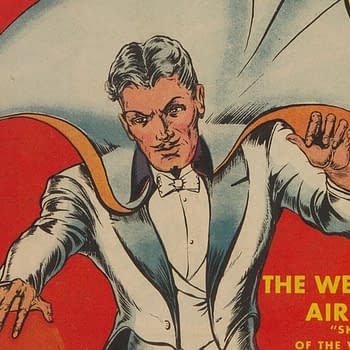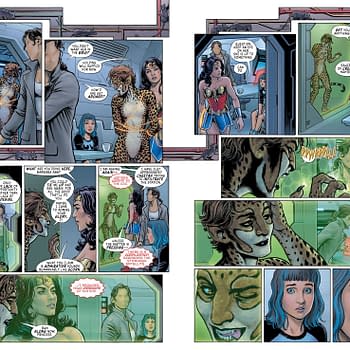Posted in: Comics | Tagged: Josepg Pulitzer, Platinum Age, Richard F. Outcault, The Yellow Kid, vintage comics, William Randolph Hearst, Yellow Journalism
What Say You, Yellow Kid?
Recently a number of you have made your voices heard about being unhappy with Bleeding Cool publishing pieces about politics. I get it. You came here for entertainment news, to escape the troubles of the real world. Don't think your concerns and thoughts are falling on deaf ears. We all hear you loud and clear.
To be blunt, comics are woven into the political fabric of America. While the first example of a comic book in America (The Adventures of Obadiah Oldbuck in 1842) may just have been a funny book, examples after that do have heavy political undertones to them. I won't bore you with a college level essay on politics in comics (no one has time for that), but I will focus on one character in particular.
Mickey Dugan, aka, The Yellow Kid.
Richard F. Outcault created the character around 1894, but he was originally a background character in Hogan's Alley. The cartoons depicted poor children living in New York, and were usually social commentary on what was happening in the world a the time. Outcault used The Yellow Kid as a means to mock all class of Americans. His yellow nightgown often depicted what he was thinking, and while some of what his comics say escape me, many of them can clearly be read as political commentary. More often than not in the world of the Kid, politics are viewed as a corruption of power.
The Kid was a hit in America. Because of his success in comics, Yellow Kid merchandise and vaudeville shows followed. The Kid also had a hand in spawning "yellow journalism". If you're not familiar with the term, it means little research is done on a topic, and it's goal is to sell as many newspapers as possible. Back then it was done by creating Anti-Spain sentiments, and spreading lies about brutality in Cuba. While this was at the time done between Joseph Pulitzer (New York World) and William Randolph Hearst (New York Journal), politicians and news outlets (especially tabloids) are still doing this to this day. It's also important to note that The Yellow Kid has been in both newspapers. The two papers were, in essence, at war with each other, and wanted to outshine one another, by using sequential art. To this day news outlets are still competing with each other, and I'd like to think it was in part because of some comic character created in the late 1800's.
The comic below is a result of a recent close election, which possibly caused uproar with people back then. You can draw a lot of parallels between this comic and what's happened in recent years. What we're seeing isn't entirely new; thankfully we can look back at the platinum age of comics and go "Ah, I see".
"So what about comics since then? I don't think they remained political!" You may be asking (I really doubt you are though, for the sake of argument just pretend). I'd personally love to dive into the history of comics more, but for now I'll just gently remind you that this was the cover of Captain America Comics #1:
















